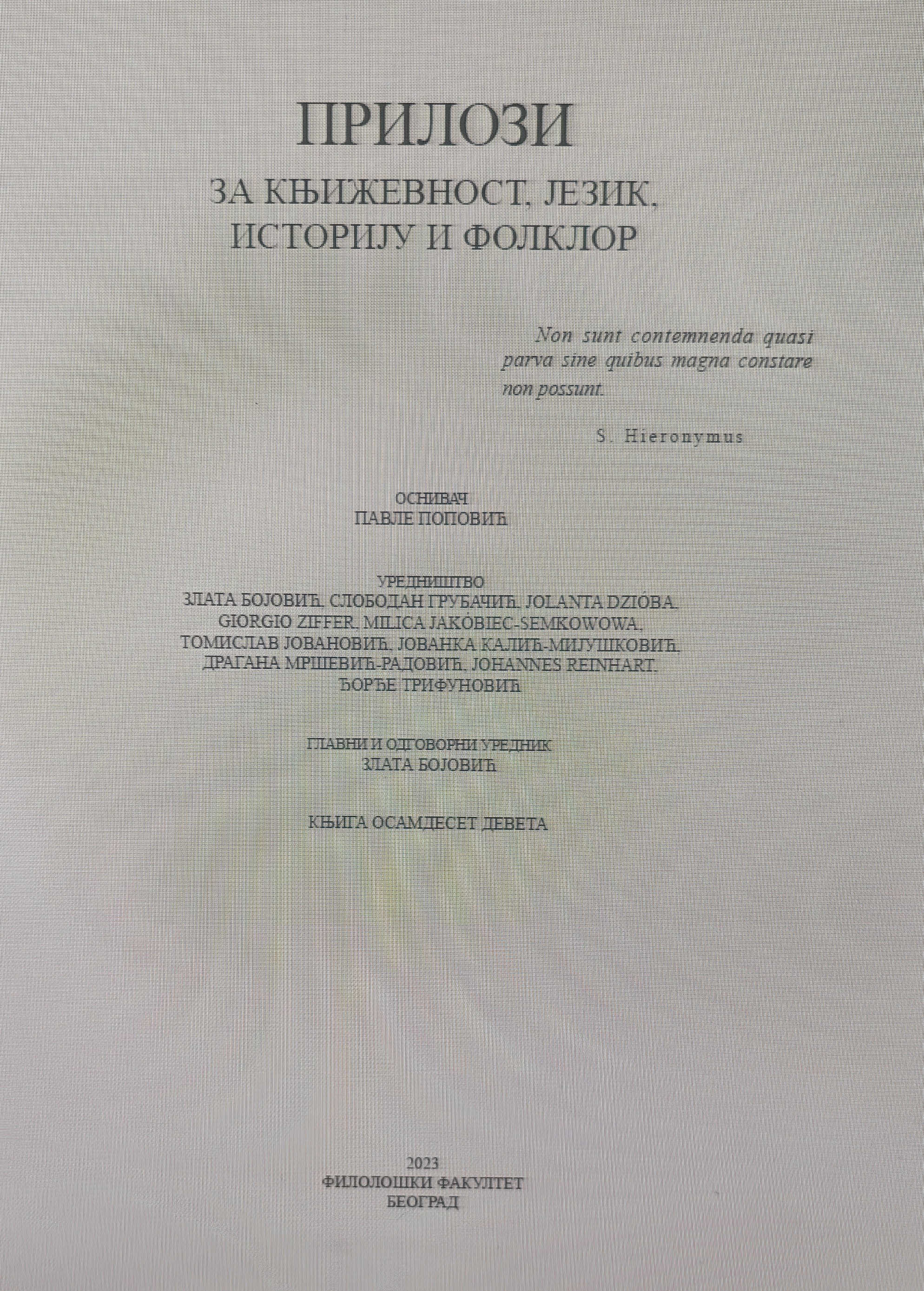АЛМАНАХ 1941–1944: ХРОНИКА И УМЕТНИЧКА ЗБИРКА ОСНАБРИЧКИХ ЛОГОРАША
Keywords:
Оснабрик, Офлаг VI C, Офлаг VI D, Станислав Винавер, Ото Бихаљи Мерин, Владета Гајић, Алманах 1941–1944Abstract
ALMANAC 1941–1944: A CHRONICLE AND ART COLLECTION OF
OSNABRÜCK OFLAG CAPTIVES
After the April war defeat, almost 200.000 Serbian officers and soldiers were taken as POWs, and deported to numerous camps in Germany, including the Oflag VI C officer camp in Osnabrück. Soon after the large-scale uprising broke out in Nazi-occupied Serbia tensions and political divisions emerged among the captives. Antifascist and leftist captives were subjected to discrimination and repression. They responded by organizing an extensive and fruitful cultural activity, seeking to resolve inner dilemmas and reach catharses by writing, drawing, painting or educating other inmates. Over the course of time two art groups were formed to institutionalize captives’ artistic aspirations: Association of Fine Artists and Literature group. On the eve of camp’s liberation, in early 1945, these two groups created a unique manuscript: Almanac 1941–1944, an impressive chronicle of camp’s history and a collection of the best literary and art works created by captured officers.
Almanac has a great value as a historical source, as it contains detailed information on captives’ cultural activity, but also on challenges of everyday life within barbwire and conflicts with German administration and nationalist captives. Although some of the Almanac’s narrative is ideologically biased, it was confirmed that Almanac is a reliable historical source, by comparing the data with archival sources of different origin.
Beautifully decorated by drawings and caricatures, written in calligraphy, the Almanac is a piece of art itself, but also a collection of published poems, essays, drawings and small paintings. Although most contributing officers didn’t have any art education at all, some of their works and contributions have high artistic value. Osnabrück Oflag poetry and prose evolves around the motives of captivity, hunger, nostalgia, uncertainty and antifascist struggle. Contributing authors were both the already established writers, such as Stanislav Vinaver, Svetozar Musulin, Oto Bihalji Merin, and the new ones, who never published before WW2, such as Petar Ivkovic or Solomon Conforti.
Illustrations were mostly done by Vladeta Gajić, whose caricatures richly decorated numerous Almanac pages. Inmate’s portraits were usually made as graphite drawings and aquarelles, so were the drawings showing the captured officers eating, drinking, hanging together, resting or reading. Camp fences and objects were mostly painted as blurry contours, usually in dark shades. It is worth noticing that many contributors were Jews, who were not betrayed or discriminated by their Serbian colleagues, but treated as completely equal.

